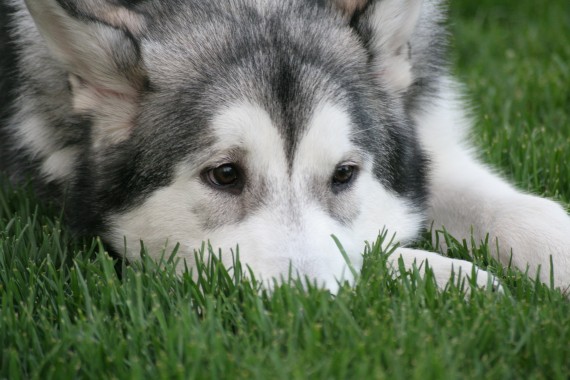Physiotherapy treatment for cranial cruciate ligament disease
 In dogs, the cruciate ligament provides stability inside the knees on their back legs. Rupturing these ligaments is one of the most common reasons for hind limb lameness, pain and knee arthritis and this painful condition is often referred to as ‘cranial cruciate ligament disease’ or CrCLD. Damage to the cruciate ligament is usually caused by several contributing factors including the degradation of the ligaments due to age, obesity, poor physical condition, genetics, skeletal shape and dog breed. If your dog suffers from cranial cruciate ligament disease through injury or one of these ailments a number of options are available:
In dogs, the cruciate ligament provides stability inside the knees on their back legs. Rupturing these ligaments is one of the most common reasons for hind limb lameness, pain and knee arthritis and this painful condition is often referred to as ‘cranial cruciate ligament disease’ or CrCLD. Damage to the cruciate ligament is usually caused by several contributing factors including the degradation of the ligaments due to age, obesity, poor physical condition, genetics, skeletal shape and dog breed. If your dog suffers from cranial cruciate ligament disease through injury or one of these ailments a number of options are available:
- Conservative treatment, however this depends on the size of the dog and the nature of the rupture
- Surgery to stabilize the knee
In both cases rehabilitation can aid the recovery of your dog.
Symptoms of cranial cruciate ligament disease
The most common sign of CrCLD is limping. Usually this will be presented suddenly after exercise, however if the rupture is partial then the symptoms may develop over a longer period of time. If your dog is struggling to get up after lying down, this might be because they are suffering from cruciate damage to both knees. Further symptoms may include:
- a decreased muscle mass in the injured leg
- a decreased range of motion in the knee joint
- swelling of fibrosis or scar tissue on the inside of the shin bone
- stiffness
- unwillingness to play
- decreased activity levels
If you notice any of these symptoms you should take your dog to your local vet or to an experienced orthopaedic surgeon for an examination. If your canine has suffered from a complete rupture, this will be highlighted by performing a series of movement tests on the knees. If your dog appears to have suffered from a partial rupture, x-rays or MRI scans may be required to confirm the damage.
Conservative and Post-operation treatment and rehabilitation
Regardless of the method of choice used to treat the CrCLD, physiotherapy can be used to aid recovery and improve the long term usage of your dog’s cruciate ligaments. It is advisable to start rehabilitation treatment as soon as your veterinary surgeon says so, as studies show that physiotherapy can speed up a dog’s recovery rate and increase the chance of a full recovery. Physiotherapy not only improves the rate of healing but it can also increase muscle mass, help to restore movement and reduce pain.
During your canine’s rehabilitation it is best to avoid any premature activities which will put your dog at risk of inflicting more pain and undoing any surgical procedures. Your dog’s physiotherapist should clearly define and explain your canine’s postoperative care which will be designed to maximise the chance of a full uninterrupted recovery. In addition to the physiotherapy treatment conducted at your vets, your canine physiotherapist should also provide you with a structured physiotherapy plan and instruct you on the day to day steps you need to follow in order to continue physiotherapy at home. Tissues can take well over six weeks to recover so it is very important that you follow these plans in order for your dog to have the best chance of a full recovery.
Dr Shahad Mohammed, at WitsEnd is a fully qualified veterinary physiotherapist and is a member of the National Association of Veterinary Physiotherapists (NAVP) with over 10 years of experience within the field. During your first appointment Shahad will observe your dog’s movement and assess their joints and muscles before planning a rehabilitation programme with you. A future re-assessment will be scheduled for 7-10 days later where Shahad will discuss progress and any other potential treatment options available. For more information please read our article on dog physiotherapy, email us on [email protected] or call us on 0116 244 2456.